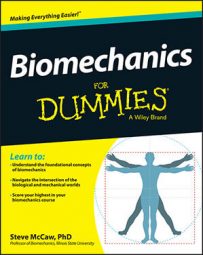Each muscle in the body includes many motor units. A motor unit consists of a group of individual muscle fibers that are activated by a single motor neuron. When stimulated by an action potential transmitted along the motor neuron, all the fibers in a motor unit develop muscle tension (a pulling force) at the same time.
Although tension development in response to an action potential is common to all motor units, the response characteristics of the individual motor units are not the same. Motor units differ based on how quickly the motor unit develops muscle tension when stimulated (known as twitch time) and the resistance of the motor unit to fatigue.
Based on response characteristics, two main categories of motor units are commonly used. One of the categories includes two subcategories:
Type I: Type I motor units develop a low peak force in a relatively long period of time (about 60 to 120 milliseconds, or ms). Type I motor units are very resistant to fatigue because they’re nourished with an extensive blood supply to maintain aerobic metabolism. (Aerobic means using oxygen.) Another name for Type I motor units is slow-twitch oxidative, based on the slow tension development time and the use of oxygen. Because they’re fatigue resistant, Type I motor units are the first motor units recruited by the central nervous system when a muscle is activated, and they continue to be recruited as long as the muscle remains active. Type I motor units are well adapted for low-intensity work like maintaining posture. They’re sometimes called tonic motor units because they provide “muscle tone.”
Type II: Type II motor units develop a high peak force in a relatively short period of time (10 to 50 ms). Type II motor units are called fast-twitch motor units because of this quicker response time. Another common name is the phasic motor unit, because Type II motor units are recruited after Type I motor units to provide short bursts, or phases, of higher muscle tension as required.
Type II motor units have two subcategories. Both reach high peak force in a relatively short period of time, but they differ in resistance to fatigue:
Type IIb: Type IIb motor units are very prone to fatigue, but they produce the most force when stimulated. These are the last motor units recruited when a muscle gets activated, and they’re the first to stop being recruited when the force from a muscle is no longer needed. Type IIb are sometimes called Type IIx in human muscle.
Type IIa: Type IIa motor units are the intermediate motor units. Their peak force and their resistance to fatigue fall between the classifications of Type I and Type IIb. These motor units are also recruited after Type I but before Type IIb, and they stop being activated after Type IIb but before Type I.
An individual muscle contains all three types of motor units. This provides each muscle with the ability to produce an increased force output from a low level to a high level, and it also provides each muscle with a certain degree of muscular endurance. The relative percentage of each motor unit type present affects the muscle’s overall endurance and power (rate of force production) capability. A greater percentage of Type I fibers means the muscle has better endurance capability, while a greater percentage of Type IIb fibers means the muscle has better power capability.
There is still controversy on whether strength training and endurance training can cause a motor unit to change its response characteristics. What is fact is that strength training is needed to provide a training stimulus to maintain the Type IIb motor units. Another fact is that a decrease in physical activity causes the muscle fibers in Type IIb motor units to atrophy (lose size and force-producing capability) more quickly than the fibers in Type I and Type IIa motor units. This is very important in preventing falls in sedentary individuals, especially the elderly. Without the availability of rapidly developed force from Type IIb motor units, the quick response needed to regain balance will not be there, and an innocent stumble can result in a devastating fall.

